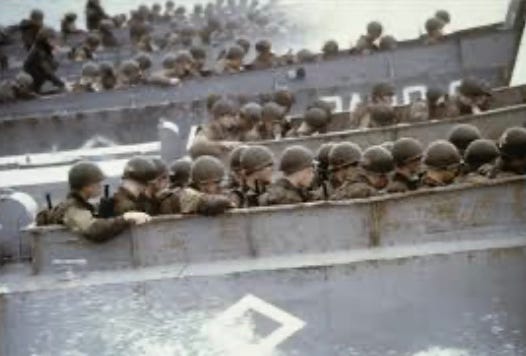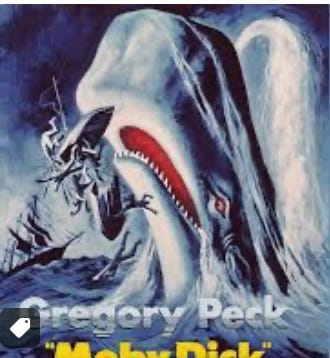Soldiers go after a shark terrorizing Normandy’s beaches in “Saving Private Ryan”
The New York Times, in its recent in-depth investigative interactive article on the influence of Steven Spielberg’s 1975 blockbuster “Jaws,” blew it! The story did not go far enough by far. So Lewis Grossberger’s Raw Truth Bulletin assigned 263 of our smartest reporters, freelancers, interns and disgruntled former staffers laid off in various downsizings, to watch every movie ever made. It took a good half hour and resulted in many deaths and injuries but this courageous team dug up the most amazing arts story in cultural journalism history, which we modestly present here...
“Jaws,” the monumental creature feature that scared people away from the world’s beaches for decades, influenced not just every film that came afterwards but also every film that came before, a new study shows.
In one way or another, our study found, every movie in history is just a remake of “Jaws.”
Even the first movie ever made, Thomas Edison’s 30-second-long, black-and-back “Workman Thumbing His Nose at the Bust of Henry Wadsworth Longfellow,” shows the impact of Spielberg’s classic shark thriller. (The workman looks frightened, as if about to be eaten by the looming bust of Longfellow.)
Most American movies, whether from the silent era, or the “talking pictures” that came later, involve a large, scary fish that eats several of the human characters in the film. Even in Westerns, a staple of the commercial Hollywood fare that has entertained audiences for more than a century, both cowboys and Indians must put aside their enmity about halfway through the movie and team up to fight off the monstrous Great White Sharks that threaten both societies.
“Citizen Kane,” the 1941 Orson Welles film that is the unanimous choice of all critics as the best movie ever made, is about a shark that assumes human form and becomes a powerful tycoon in the newspaper industry. It was the movie that featured the famous line, “We’re going to need a bigger font,” spoken when the Kane character writes the front-page headline that proclaims he is running for president of the US.
The Oscar-winning 1939 super hit “Gone With the Wind,” based on Ernest Hemingway’s novel, “The Old Man and the Sea,” was a love story set against the turmoil of the Civil War, when the US broke apart as south seas creatures rose up in rebellion to preserve Great White Shark supremacy.
But how could a movie not made until 1975 influence movies made in 1966 or 1919?
“Durational empathy transfer,” explains Dr. Yehuda R. Gupte, chairman of the Harvey Weinstein School of Filmic Studies at Syracuse University. “The sensibilities of great directors all vibrate at the same rate of speed, transmitting narrative ideas through time, space and alternate dimensions. Spielberg is a primary conductor of anticipatory filmic electrical impulses. It all flows through him and ‘Jaws’ is the Rosetta Stone of film structure.”
Even foreign films, many of which come from countries outside the US, bear the imprint of “Jaws.” Ingmar Bergman’s “Wild Strawberries,” a Swedish drama plagued for years by inaccurate subtitles, was really about an old man’s bitter regret that as mayor of Goteborg Island many years ago, he told the townspeople not to worry about sharks, resulting in the horrifying on-screen death of his entire family.
Federico Fellini’s masterpiece, “La Dolce Vita,” was actually about the rise of the first company to sell herring in jars. Herring is what Great White Sharks eat when they can’t find human victims or rubber tire tubes.
“We’re gonna need a smaller fish,” says Captain Ahab (Gregory Peck) in an immortal line from “Moby Dick,” which was pitched as “Jaws, Size XL!”






You forgot The Third Man. Its original title was The Third Shark, but they changed it after Orson had dinner on the pier in Malibu.
You have a knack for being a critic of famous films,with a flair for comidic insights.
Your new carrear..